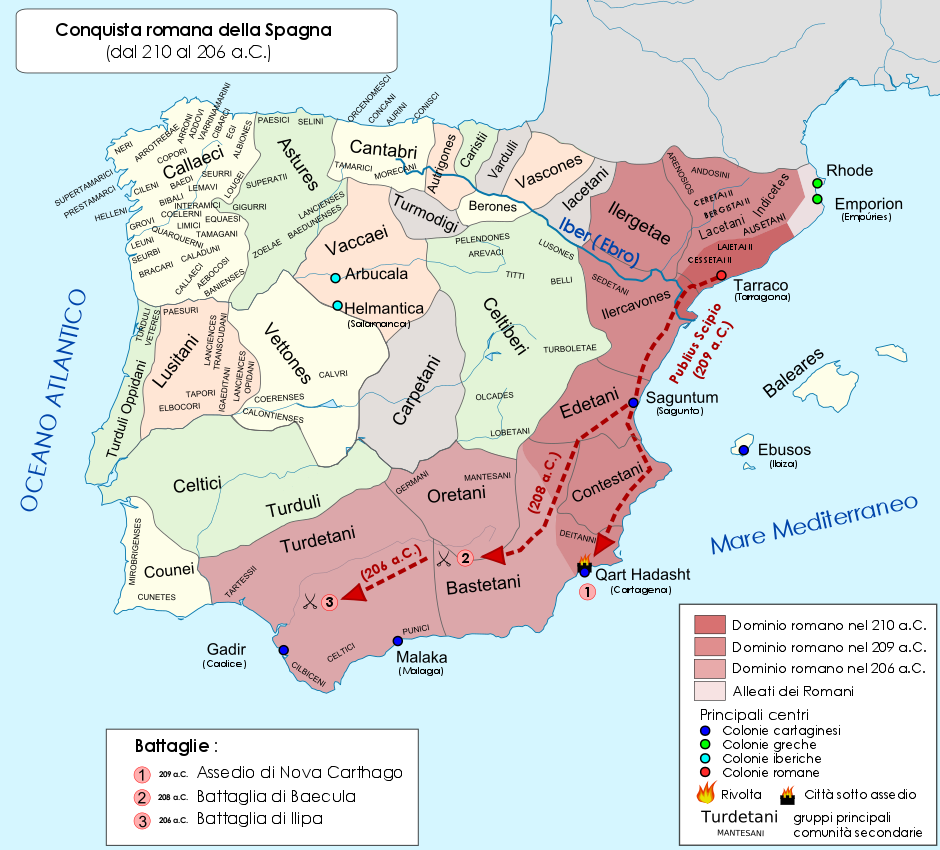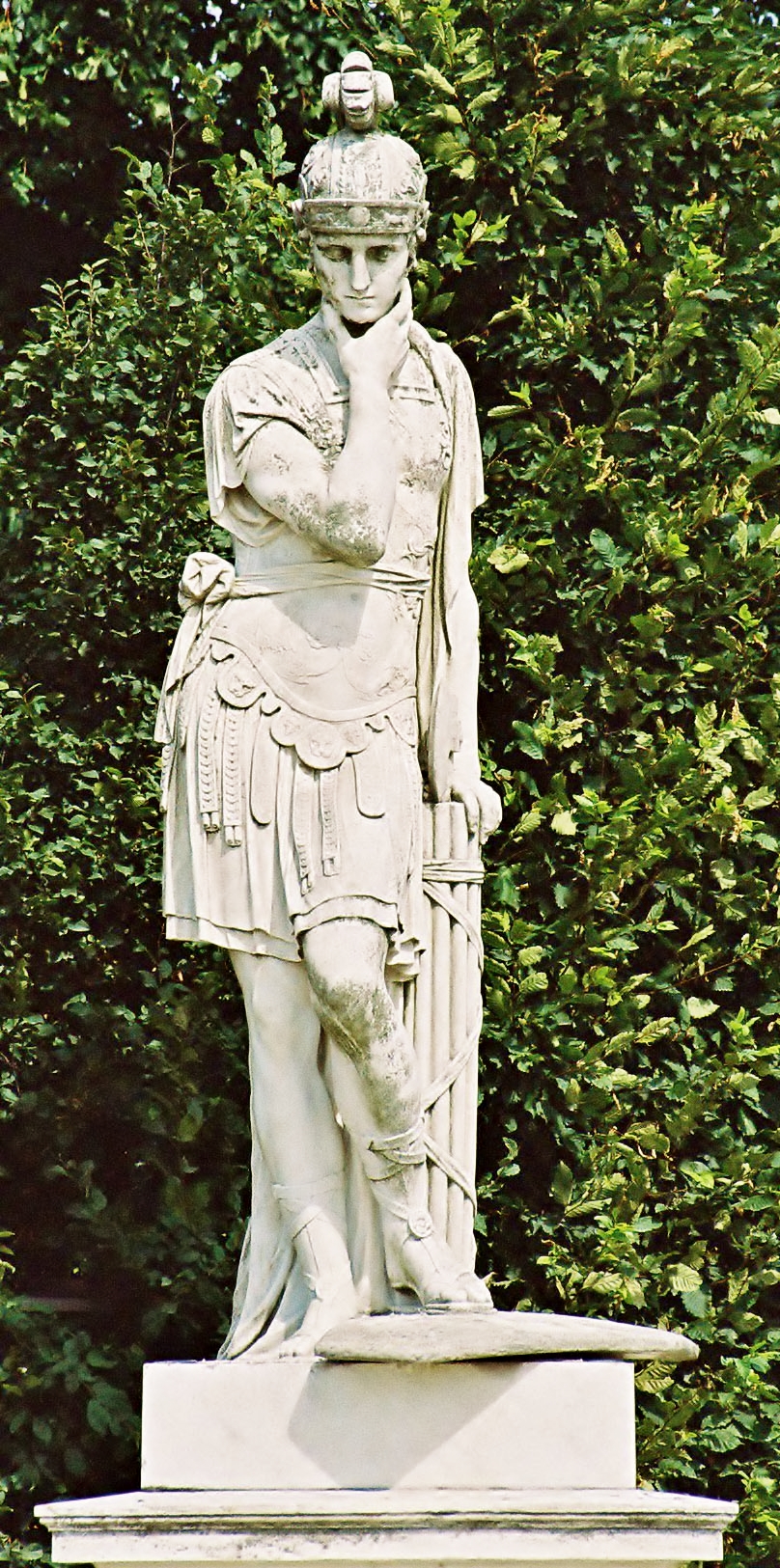|
Jupiter's Darling
''Jupiter's Darling'' is a 1955 American Eastman Color musical romance film released by MGM and directed by George Sidney filmed in CinemaScope. It starred Esther Williams as the Roman (by way of Greece) woman Amytis, Howard Keel as Hannibal, the Carthaginian military commander, and George Sanders as Fabius Maximus, Amytis's fiancé. The film features many historical characters, including Roman generals Fabius Maximus and Scipio Africanus who appears briefly, in addition to Hannibal. Carthaginians Mago Barca and Maharbal also appear. ''Jupiter's Darling'' was based on Robert E. Sherwood's anti-war comedy play '' The Road to Rome'' (1927). The film was the last of three films Williams and Keel made together, the other two being '' Pagan Love Song'' (1950) and '' Texas Carnival'' (1951). He later said he felt it was the best picture they made together.Keel p 179 The movie was a huge financial flop and the last movie Williams made at MGM. Plot Horatio the Historian sings to ... [...More Info...] [...Related Items...] OR: [Wikipedia] [Google] [Baidu] |
George Sidney
George Sidney (October 4, 1916May 5, 2002) was an American film director and producer who worked primarily at Metro-Goldwyn-Mayer. His work includes cult classics '' Bye Bye Birdie'' (1963) and '' Viva Las Vegas'' (1964). With an extensive background in acting, stage direction, film editing, and music, Sidney created many of post-war Hollywood's big budget musicals, such as '' Annie Get Your Gun'' (1950), ''Show Boat'' (1951), '' Kiss Me Kate'' (1953), '' Jupiter's Darling'' (1955), and '' Pal Joey'' (1957). He was also a president of the Screen Directors Guild for 16 years. A founding partner of Hanna-Barbera animation studio, Sidney was a proponent of the integration of animation into live action, which is immortalized in the dance scene between actor Gene Kelly and Jerry Mouse in '' Anchors Aweigh'' (1945). An avid art collector, gardener, musician, painter, and photographer, George Sidney was known for his impeccable sense of style and generosity. His clothing, original sc ... [...More Info...] [...Related Items...] OR: [Wikipedia] [Google] [Baidu] |
Ralph E
Ralph (pronounced or ) is a male name of English origin, derived from the Old English ''Rædwulf'' and Old High German ''Radulf'', cognate with the Old Norse ''Raðulfr'' (''rað'' "counsel" and ''ulfr'' "wolf"). The most common forms are: * Ralph, the common variant form in English, which takes either of the given pronunciations. * Rafe, variant form which is less common; this spelling is always pronounced . * Raif, a very rare variant. Raif Rackstraw from H.M.S. Pinafore * Ralf, the traditional variant form in Dutch, German, Swedish, and Polish. * Ralfs, the traditional variant form in Latvian. * Raoul, the traditional variant form in French. * Raúl, the traditional variant form in Spanish. * Raul, the traditional variant form in Portuguese and Italian. * Raül, the traditional variant form in Catalan. * Rádhulbh, the traditional variant form in Irish. First name Middle Ages * Ralph the Timid (died 1057), pre-Conquest Norman earl of Hereford, England * Ralp ... [...More Info...] [...Related Items...] OR: [Wikipedia] [Google] [Baidu] |
Maharbal
Maharbal (, ; ; centuryBC) was a Numidian army commander in charge of the cavalry under Hannibal and his second-in-command during the Second Punic War. Maharbal was a very close friend to Hannibal and admired him greatly. He was often critical to the battlefield success of Carthage over Roman Republic, Rome. Throughout his Italian campaign Hannibal maintained numerical superiority in cavalry, and thus relied upon them and Maharbal to give his army an advantage. Maharbal is best known for what he possibly said during a conversation with Hannibal immediately following the Battle of Cannae. According to Livy, Maharbal strongly urged an immediate march on the city of Rome. Hannibal responded by saying "I commend your zeal, but I need time to weigh the plan which you propose." Maharbal then replied, "Assuredly, no one man has been blessed with all God's gifts. You, Hannibal, know how to gain a victory; you do not know how to use it." The Latin for the last sentence of the conversation ... [...More Info...] [...Related Items...] OR: [Wikipedia] [Google] [Baidu] |
Mago Barca
Mago Barca (; died 202 BC) was a Carthaginian, member of the Barcid family, who played an important role in the Second Punic War, leading forces of Carthage against the Roman Republic in Iberia and northern and central Italy. Mago was the third son of Hamilcar Barca, was the brother of Hannibal and Hasdrubal, and was the brother-in-law of Hasdrubal the Fair. Little is known about his early years, except that, unlike his brothers, he is not mentioned during the ambush in which his father was killed in 228 BC. Name The name "Mago(n)" was a common masculine given name among the Carthaginian elite. It meant "Godsent". The cognomen or epithet means " thunderbolt" or "shining". It is cognate with the Arabic name Barq and the Hebrew name Barak and equivalent to the Greek ''Keraunos'', which was borne by contemporary commanders. It had been used for Mago's father Hamilcar and is used to distinguish his three sons from others who shared their names. On the Italian Pen ... [...More Info...] [...Related Items...] OR: [Wikipedia] [Google] [Baidu] |
Scipio Africanus
Publius Cornelius Scipio Africanus (, , ; 236/235–) was a Roman general and statesman who was one of the main architects of Rome's victory against Ancient Carthage, Carthage in the Second Punic War. Often regarded as one of the greatest military commanders and strategists of all time, his greatest military achievement was the defeat of Hannibal at the Battle of Zama in 202 BC. This victory in Africa earned him the honorific epithet ''Africanus'', literally meaning 'the African', but meant to be understood as a conqueror of Africa (Roman province), Africa. Scipio's conquest of Carthaginian Iberia culminated in the Battle of Ilipa in 206 BC against Hannibal's brother Mago Barca. Although considered a hero by the Roman people, primarily for his victories against Carthage, Scipio had many opponents, especially Cato the Elder, who hated him deeply. In 187 BC, he was tried in a show trial alongside his brother for bribes they supposedly received from the Seleucid king Antiochus III ... [...More Info...] [...Related Items...] OR: [Wikipedia] [Google] [Baidu] |
Fabius Maximus
Quintus Fabius Maximus Verrucosus (), surnamed Cunctator ( 280 – 203 BC), was a Roman statesman and general of the third century BC. He was consul five times (233, 228, 215, 214, and 209 BC) and was appointed dictator in 221 and 217 BC. He was censor in 230 BC. His agnomen, ''Cunctator'', usually translated as "the delayer", refers to the strategy that he employed against Hannibal's forces during the Second Punic War. Facing an outstanding commander with superior numbers, he pursued a then-novel strategy of targeting the enemy's supply lines, and accepting only smaller engagements on favourable ground, rather than risking his entire army on direct confrontation with Hannibal himself. As a result, he is regarded as the originator of many tactics used in guerrilla warfare. Beginnings Born at Rome c. 280 BC, Fabius was a descendant of the ancient patrician Fabia gens. He was the son or grandson of Quintus Fabius Maximus Gurges, three times consul and ''princeps senatus'', a ... [...More Info...] [...Related Items...] OR: [Wikipedia] [Google] [Baidu] |
Quintus Fabius Maximus Verrucosus
Quintus Fabius Maximus Verrucosus (), surnamed Cunctator ( 280 – 203 BC), was a Roman statesman and general of the third century BC. He was Roman consul, consul five times (233, 228, 215, 214, and 209 BC) and was appointed Roman dictator, dictator in 221 and 217 BC. He was Roman censor, censor in 230 BC. His agnomen, ''Cunctator'', usually translated as "the delayer", refers to Fabian strategy, the strategy that he employed against Hannibal's forces during the Second Punic War. Facing an outstanding commander with superior numbers, he pursued a then-novel strategy of targeting the enemy's supply lines, and accepting only smaller engagements on favourable ground, rather than risking his entire army on direct confrontation with Hannibal himself. As a result, he is regarded as the originator of many tactics used in guerrilla warfare. Beginnings Born at Rome c. 280 BC, Fabius was a descendant of the ancient Patrician (ancient Rome), patrician Fabia gens. He was the son or grands ... [...More Info...] [...Related Items...] OR: [Wikipedia] [Google] [Baidu] |
Carthage
Carthage was an ancient city in Northern Africa, on the eastern side of the Lake of Tunis in what is now Tunisia. Carthage was one of the most important trading hubs of the Ancient Mediterranean and one of the most affluent cities of the classical world. It became the capital city of the civilization of Ancient Carthage and later Roman Carthage. The city developed from a Phoenician colony into the capital of a Punic people, Punic empire which dominated large parts of the Southwest Mediterranean during the first millennium BC. The legendary Queen Elissa, Alyssa or Dido, originally from Tyre, Lebanon, Tyre, is regarded as the founder of the city, though her historicity has been questioned. In the myth, Dido asked for land from a local tribe, which told her that she could get as much land as an oxhide could cover. She cut the oxhide into strips and laid out the perimeter of the new city. As Carthage prospered at home, the polity sent colonists abroad as well as magistrates to rule t ... [...More Info...] [...Related Items...] OR: [Wikipedia] [Google] [Baidu] |
Hannibal
Hannibal (; ; 247 – between 183 and 181 BC) was a Punic people, Carthaginian general and statesman who commanded the forces of Ancient Carthage, Carthage in their battle against the Roman Republic during the Second Punic War. Hannibal's father, Hamilcar Barca, was a leading Carthaginian general during the First Punic War. His younger brothers were Mago Barca, Mago and Hasdrubal Barca, Hasdrubal; his brother-in-law was Hasdrubal the Fair, who commanded other Carthaginian armies. Hannibal lived during a period of great tension in the Mediterranean Basin, triggered by the emergence of the Roman Republic as a great power with its defeat of Carthage in the First Punic War. Revanchism prevailed in Carthage, symbolized by the pledge that Hannibal made to his father to "never be a friend of Rome". In 218 BC, Hannibal attacked Saguntum (modern Sagunto, Spain), an ally of Rome, in Hispania, sparking the Second Punic War. Hannibal invaded Italy by Hannibal's crossing of the Alps, cross ... [...More Info...] [...Related Items...] OR: [Wikipedia] [Google] [Baidu] |
CinemaScope
CinemaScope is an anamorphic format, anamorphic lens series used, from 1953 to 1967, and less often later, for shooting widescreen films that, crucially, could be screened in theatres using existing equipment, albeit with a lens adapter. Its creation in 1953 by Spyros Skouras, Spyros P. Skouras, the president of 20th Century Fox, marked the beginning of the modern anamorphic format in both principal Aspect ratio (image), 2.55:1, almost twice as wide as the previously common Academy format's 1.37:1 ratio. Although the technology behind the CinemaScope lens system was made obsolete by later developments, primarily advanced by Panavision, CinemaScope's anamorphic format has continued to this day. In film-industry jargon, the shortened form, 'Scope, is still widely used by both filmmakers and projectionists, although today it generally refers to any Anamorphic format, 2.35:1, 2.39:1, 2.40:1, or 2.55:1 presentation or, sometimes, the use of anamorphic lensing or projection in general. ... [...More Info...] [...Related Items...] OR: [Wikipedia] [Google] [Baidu] |
Romance Film
Romance films involve romantic love stories recorded in visual media for broadcast in theatres or on television that focus on passion (emotion), passion, emotion, and the affectionate romantic involvement of the main characters. Typically their journey through dating, courtship or marriage, marriage is featured. These films focus on the search for romantic love as the main plot focus. Occasionally, romance lovers face obstacles such as finances, physical illness, various forms of discrimination, psychological restraints, or family resistance. As in all quite strong, deep, and close romantic relationships, the tensions of day-to-day life, temptations (of infidelity), and differences in compatibility enter into the plots of romantic films. Romantic films often explore the essential themes of love at first sight, young and mature love, unrequited love, obsession, sentimental love, Spirituality, spiritual love, forbidden love, platonic love, sexual and passionate love, sacrificial ... [...More Info...] [...Related Items...] OR: [Wikipedia] [Google] [Baidu] |
Musical Film
Musical film is a film genre in which songs by the Character (arts), characters are interwoven into the narrative, sometimes accompanied by dancing. The songs usually advance the plot or develop the film's characters, but in some cases, they serve merely as breaks in the storyline, often as elaborate "production numbers". The musical film was a natural development of the musical theater, stage musical after the emergence of sound film technology. Typically, the biggest difference between film and stage musicals is the use of lavish background scenery and locations that would be impractical in a theater. Musical films characteristically contain elements reminiscent of theater; performers often treat their song and dance numbers as if a live audience were watching. In a sense, the viewer becomes the diegesis, diegetic audience, as the performer looks directly into the camera and performs to it. With the Sound film, advent of sound in the late 1920s, musicals gained popularity with ... [...More Info...] [...Related Items...] OR: [Wikipedia] [Google] [Baidu] |






